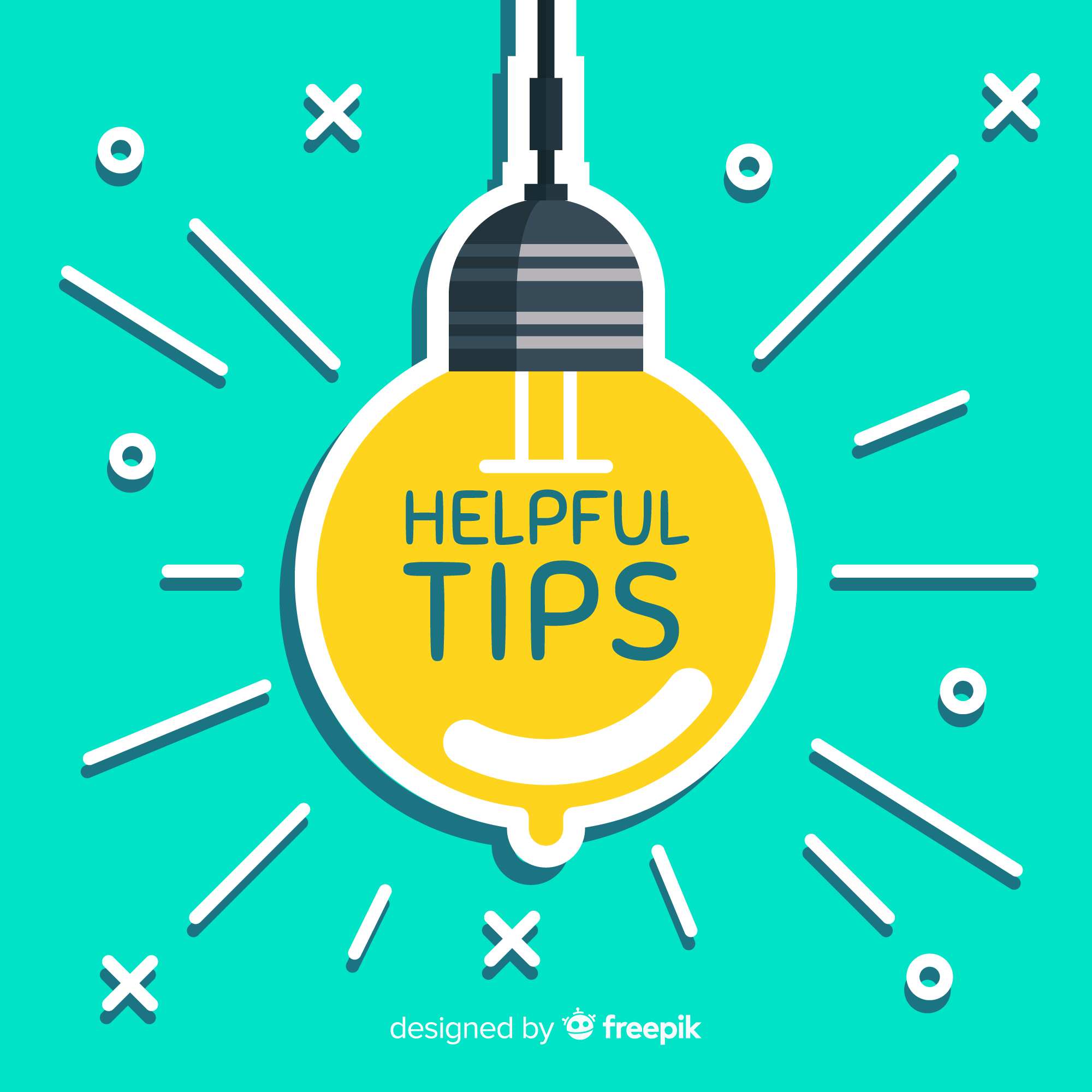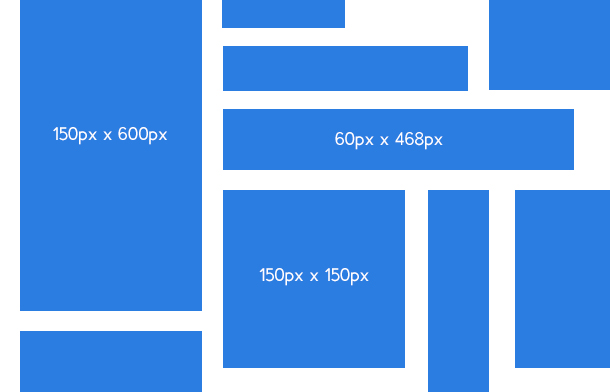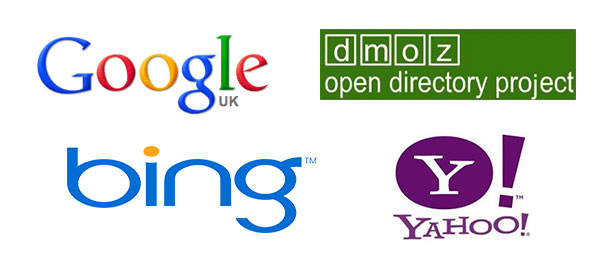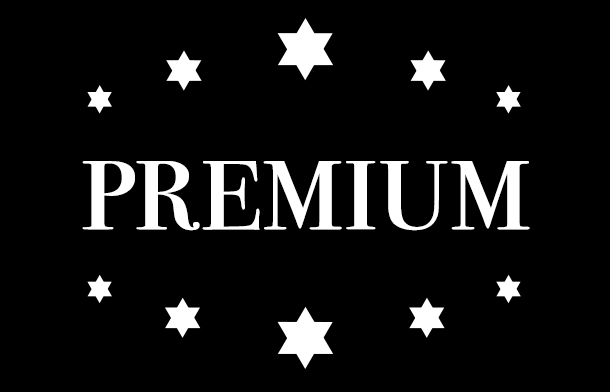How to Make Great Telephone Sales Calls
Masterful Design Tips - Unleashing the Power of Clever Graphic Design
Unveiling Iconography - The Art and Essence of Visual Communication
Our New Custom Designed Business Card in 2016
Standard Web Banner Sizes
Five Steps Towards a Successful Marketing Campaign
Things You Can Do to Improve the Effectiveness of Your Website
How to Submit Your Website to Search Engines and Directories
Cost Effective Methods to Gain New Customers On A Tight Budget
A List of Websites Where You Can Find Business Networking Events
How to Gain New Customers for Your Business by Targeting Them Effectively
How to Raise Money for Your Business
Tips to Figure out if You Should Be Charged VAT on the Printing of Your Leaflets
How Our Design Services Can Support Your Marketing Activities
Where to find the PHP.ini file in MAMP
Top Tips to help You Network Effectively
How to Find New Customers for Your Business
Four Reasons Why Quality of Design is Important
Benefits of a Well Designed Website
Professional Quality Design is an Investment
Posted on 10 January 2024 by admin.
Posted on 07 January 2024 by admin.
Posted on 28 December 2023 by admin.
Posted on 29 January 2016 by admin.
Posted on 13 June 2013 by admin.
Posted on 17 April 2013 by admin.
Posted on 16 March 2013 by admin.
Posted on 17 February 2013 by admin.
Posted on 09 January 2013 by admin.
Posted on 11 December 2012 by admin.
Posted on 29 October 2012 by admin.
Posted on 18 September 2012 by admin.
Posted on 02 July 2012 by admin.
Posted on 18 June 2012 by admin.
Posted on 08 June 2012 by admin.
Posted on 25 May 2012 by admin.
Posted on 20 May 2012 by admin.
Posted on 02 May 2012 by admin.
Posted on 29 February 2012 by admin.
Posted on 07 December 2011 by admin.

Mastering the Art of Telephone Sales - A Guide to Success
In the dynamic world of sales, mastering the art of telephone calls is a crucial skill that can elevate your success to new heights. Whether you’re a seasoned professional or just starting, these tips will help you engage prospects, handle objections, and close deals with finesse.
1. Dive into Research and Preparation:
Effective sales begin with knowing your product or service inside out. Conduct thorough research on your prospect and anticipate objections. Have a clear goal for each call, making your conversations purposeful and impactful.
2. Set the Tone with Positivity:
Your voice sets the stage for the conversation. Start with a warm greeting and introduce yourself. Remember to smile while talking; it’s a simple trick that reflects in your tone. Personalize the conversation by using the prospect’s name—it goes a long way in establishing a connection.
3. Focus on the Prospect:
Active listening is your secret weapon. Understand the prospect’s needs and tailor your pitch accordingly. Pose open-ended questions to encourage dialogue, creating a two-way conversation that builds rapport.
4. Emphasize Benefits:
Highlighting the benefits of your product or service is key. Relate these benefits directly to the prospect’s needs or challenges. Be concise and focused, respecting their time and keeping them engaged.
5. Handle Objections Like a Pro:
Objections are inevitable, but they’re also opportunities. Anticipate common objections and respond confidently. Use objections as a chance to provide more information and address concerns.
6. Time Your Calls Wisely:
Consider the prospect’s time zone and likely availability. Avoid calling during busy hours or holidays. A well-timed call increases the likelihood of a positive reception.
7. Follow Up Strategically:
If the prospect isn’t ready to commit, establish a follow-up plan. Send additional materials promptly and maintain the momentum. Following up demonstrates your commitment and keeps the conversation alive.
8. Be Adaptable:
Flexibility is a hallmark of successful sales professionals. Adapt your approach based on the prospect’s reactions and guide the conversation in a direction that aligns with their needs.
9. Stay Positive and Resilient:
Not every call will end in a sale. Learn from each experience, staying positive and resilient. Your professional demeanor, even in the face of challenges, leaves a lasting impression.
10. Strive for Continuous Improvement:
Sales is an evolving field. Regularly evaluate your calls, seeking feedback from colleagues or supervisors. Identify areas for improvement and embrace a mindset of continuous learning.
Mastering telephone sales is an ongoing journey. With these strategies, you’re well-equipped to navigate the challenges, build meaningful connections, and achieve success in the ever-evolving world of sales. Happy calling!
Image by KamranAydinov on Freepik

In the dynamic world of graphic design, creativity knows no bounds. Elevating your design game requires a blend of innovation, technique, and a touch of cleverness. Let’s explore some tips that can transform your design approach and help you create visually stunning and impactful graphics.
Typography Matters:
Choose fonts wisely to convey the right tone and personality. Experiment with font pairing for a dynamic visual hierarchy. Consider customising fonts to add a unique touch to your designs.
Whitespace Is Your Friend:
Embrace the power of whitespace. Don’t overcrowd your designs; let elements breathe. Whitespace enhances readability and draws attention to key elements, creating a harmonious composition.
Colour Psychology:
Delve into the psychology of colours to evoke specific emotions. Understand the cultural associations of colours and use them strategically to convey the desired message.
Contrast for Impact:
Create visual interest by leveraging contrast. Play with colours, shapes, and sizes to make important elements stand out. High contrast ensures that your message is easily digestible.
Iconography Simplified:
Design clear and concise icons. Icons should communicate their purpose instantly. Aim for simplicity without sacrificing meaning, ensuring that your audience interprets them effortlessly.
Consistency Across Platforms:
Maintain design consistency across various platforms. Whether it’s social media, websites, or print materials, a consistent visual identity strengthens brand recognition.
Embrace Negative Space:
Negative space isn’t just empty space; it’s a design element. Use negative space purposefully to create hidden meanings or convey additional messages within your graphics.
Tell a Story:
Every design has a story to tell. Craft a narrative through your visuals. Whether it’s a product advertisement or a social media post, a compelling story captivates your audience.
Experiment with Layouts:
Break free from conventional layouts. Experiment with asymmetry, unconventional grids, or overlapping elements. Challenge design norms to create eye-catching and memorable layouts.
Infographics for Clarity:
Simplify complex information with infographics. Visual data representation enhances understanding. Experiment with creative infographic designs to make information more digestible.
Blend Photography and Graphics:
Combine photography with graphic elements for a unique visual experience. Overlay text or illustrations onto images to create a seamless fusion of the digital and real worlds.
Masterful Use of Shadows:
Shadows add depth and realism to your designs. Experiment with various shadow effects to create a three-dimensional feel, making your graphics visually striking.
Conclusion:
In the ever-evolving landscape of graphic design, cleverness is your secret weapon. By embracing these tips and infusing your designs with innovation and strategic thinking, you’ll undoubtedly captivate your audience and leave a lasting impression. So, go ahead, unleash your creativity, and let your designs speak volumes.
Image by Freepik
In the realm of design, where every pixel carries meaning, iconography emerges as a powerful and condensed form of visual language. Icons, those small, symbolic images, hold the potential to convey complex ideas and actions with simplicity. In this exploration, we unravel the concept of iconography and delve into the elements that elevate it to greatness.
Understanding Iconography: A Visual Language
Iconography is the art and science of creating symbols or icons to represent objects, concepts, or actions. These visual elements transcend language barriers, offering a universal means of communication. In the digital age, icons have become integral to user interfaces, enhancing user experience and facilitating intuitive interaction.
What Makes Great Iconography?
Clarity and Simplicity:
Great icons are immediately recognizable and convey their meaning with clarity. Simplicity is key; an effective icon distills complex ideas into a visually straightforward form, ensuring instant comprehension.
Consistency Across Platforms:
Consistency fosters familiarity. Icons should maintain a cohesive visual language across different platforms, ensuring users can seamlessly navigate and understand their meaning, whether on a website, app, or print material.
Appropriate Metaphors:
The best icons serve as metaphors, drawing upon universally understood symbols. Whether it’s a floppy disk to symbolize save or a magnifying glass for search, these metaphors enhance the user’s ability to grasp functionality effortlessly.
Scalability:
Great icons retain their visual integrity at various sizes. From a small app button to a larger website header, scalability ensures that the icon remains recognizable and retains its impact.
Distinctiveness:
Icons should be distinctive enough to stand out but not so complex that they become overwhelming. Striking the right balance ensures that icons enhance visual appeal without causing cognitive overload.
Aesthetic Consistency:
A set of icons within a project should share a cohesive design language, maintaining a harmonious aesthetic. Consistency in style, color palette, and proportions creates a unified visual experience.
Adaptability to Dark and Light Themes:
Considering the widespread use of dark and light themes in modern interfaces, icons that seamlessly adapt to both color schemes enhance accessibility and visual appeal.
Emotional Resonance:
Icons have the power to evoke emotions and connect with users on a personal level. Great iconography goes beyond functionality, creating an emotional bond that enhances the overall user experience.
Conclusion: Crafting Timeless Visual Narratives
In the digital landscape, where attention spans are fleeting and information overload is rampant, great iconography is the silent storyteller. It communicates without words, guides without instructions, and elevates user experiences to memorable heights. As designers, embracing the principles of clarity, consistency, and creativity empowers us to craft timeless visual narratives through the artful language of icons.

We’ve just custom designed our brand new business cards for 2016. Printed on high quality Mohawk Superfine card stock, we think they look great and will make a lasting impression! If you would like high quality custom designed business cards to be created for your company, then please do contact us.

In this article we’ll let you in on the various standard web banner sizes you can use to create your web banners. You may be wondering why stick to using standard sizes. Well, web banners are normally used on websites other than your own, to drive traffic to your website, and these websites usually have standard sized advertising spaces. So the main reason for you to to use standard sizes is so that the banners you create fit neatly in the advertising spaces of the websites they will appear on. A quick word of warning, although standard web banner sizes are commonly used, always check with the website owner as to the web banner sizes they will accept before creating your web banner(s). Some website owners may allow you custom sized web banner sizes.
Web Banner Size in Pixels (Width x Height)
- 468px x 60px
- 728px x 90px
- 336px x 280px
- 300px x 250px
- 250px x 250px
- 160px x 600px
- 120px x 600px
- 120px x 240px
- 240px x 400px
- 234px x 60px
- 180px x 150px
- 125px x 125px
- 120px x 90px
- 120px x 60px
- 88px x 31px
You may be pleased to hear that we at Custel Design can create standard sized and custom sized banners for your marketing and advertising requirements. Click here to find out how we can help.

A well planned and executed marketing campaign can help you increase brand loyalty, increase awareness about your business, increase product sales, improve your social status on social websites like Facebook & Twitter and more. It can also help you be more effective and efficient with your time, money and resources by avoiding marketing activities that don’t work or only offer very low returns. Before you carry out the following steps, it’s important to have a marketing plan that you can refer to for guidance whilst you plan your marketing campaign. So let’s now delve into the steps you should take to plan a successful marketing campaign.
Step 1
Figure out what you want to achieve with your marketing campaign (i.e. what is the goal of this campaign?). For example, it could be that you want to raise you company’s profile in your local area, gain leads (i.e. increase quote requests), increase subscribers to your Facebook/Twitter page, become known for selling the best fish and chips in the area. Make sure you have just one primary goal, as this will help you stay focused and make the following steps much easier.
Step 2
Pinpoint who you are going to target for this campaign. Use your marketing plan to select a specific target audience.
Step 3
Decide what offer or promotion you will use. For example you could include 10% off, run a free giveaway or run a competition. There are many other things you could do. Whatever you choose must appeal to your target audience in order to be successful. The more you know about your target audience, the easier it will be to decide what you will offer.
Step 4
Determine which channel(s) you will run your campaign on. The idea here is to select only those channels that the majority of your target audience uses. There’s no point in campaigning though radio if none or very few of your target audience uses it. Bear in mind your budget as this may limit which channels you can use. Below is a list of channel ideas to help you get started:
- Your website
- Google Adwords
- Social media such as Facebook and Twitter
- In your newsletter
- At networking events (which networking event(s)?)
- In leaflets
- Telling people face to face
- On television (which channels(s)?)
- On radio (which station(s)?)
- In the newspaper (which newspapers(s)?)
Step 5
Once you have completed the four steps above, you should be in a position to think about the marketing materials that will need to be created for your campaign. We at Custel Design can help you put together effective marketing materials for your campaign. Click here to get in-touch.

If you have a website that isn’t performing effectively (e.g. your response rate is low or zero via your website), this article could help. Your website is a living breathing document, and it requires time and effort to get the most out of it. So with this in mind, we’ll go through some of the common mistakes and what can be done to put them right.
The Purpose Of The Website Is Unclear
Figure out the main purpose of the website; is it to sell your products, or to promote your business. You need to make it clear to your visitors, what you can do for them. This is especially important on the homepage, as most of your visitors will come through this way.
Out-of-date Information
Ensure that old information is either updated, archived or deleted.
Broken Links and Missing Images
Once you’ve written or updated your page, check it for any links that don’t work and any missing images. Fix as necessary.
Missing Alt Text
Provide alt (i.e. alternative) text for images. This is a good search engine optimisation tip and can improve where your website appears in search listings such as Google.
Not Using URL Friendly Links
Make sure that the name of each webpage shows up in the address bar. If they are static pages, you can just change the name of the webpage file. If you’re using a content management system such as Wordpress, you can set this in the Permalink settings. This is another good search engine optimisation tip, which can help your website to be listed more prominently in search results.
Poor Spelling and Grammar
This one goes without say, always check for spelling and grammatical errors. Many webpage editors have a built-in spell, so use it. You can also check your text in a Microsoft Word.
Not Providing A Way For Visitors To Contact You
Most businesses will have a need for their visitors to get in-touch with them. Make sure you make it easy for visitors to get in-touch with you in one way or another.
Poor Navigation
Keep navigation simple, easy to access and in one place across your entire website, otherwise you could end up confusing your visitors.
Poor Layout and Design
This is where a good web designer can really help. Poor layout and design, can make a website look amateurish and untrustworthy, which in-turn could really limit the number of potential customers you are able to gain.
Little or No Consistency Between Webpages
If there is little or no consistency between webpages, your website may look unprofessional and be difficult to use. So stick to keeping the layout and colours similar throughout your website.
Poor Colour Scheme
Colour will affect how your website is perceived. Use your brand guidelines when applying colour to keep things looking consistent, professional and trustworthy.
Slow Loading Pages
Slow loading pages can create a bad impression. Good websites, usually load very quickly. Ensure you compress images, video, sound and other multimedia before putting it on your website.
Irrelevant Information
Put simply, if the information you are writing is not really relevant to the purpose of the page, don’t include it, you’ll just end up losing the interest of your visitors. Ensure that you write each page with a purpose to keep things on track.
Not Including Any Call To Action Buttons
A call to action button should be used at the end of an article, in order persuade your visitors to carry out a particular action. For example, this could be to get a quote or request further information. Not including a button or link will leave potential customers untapped.
No Back-links To Your Website
Back-links are links to your website from external websites. Whilst you can’t really control who links to your website, you can add your website URL to directories and search engines. This is something you should do. If there is some affinity between you and another business that has a high page rank, you could ask them if they would be willing to add your website to their website.
No Internal Links
You should create links to pages within your website, this will help search engines index your website. This is another good search engine optimisation tip.
Not using the tags correctly - Ensure you correctly use tags such as header (i.e. h1, h2, h3, h4, h5, h6) and paragraph (i.e. p).
Not Keeping Things Simple
Keeping things simple, will make your website easier to manage and more usable for your visitors. You should aim to make things as simple for visitors, so that they enjoy the experience and keep coming back.
Of-course every website is different and may require you to do more or different things in order to make it effective, but these tips should help your get started. If you require help with your website, we could help.
Laptop & statistics image courtesy of suphakit73 / FreeDigitalPhotos.net

Once your website has been developed, you’ll probably want it to be found in various search engines and directories. So in this article we’ll run through how to add your website to various search engines (Definition: A tool which helps internet users find relevant information based on keyword(s) search) and directories (Definition: A collection of websites organised by category, that you you would usually browse to access the relevant information).
Submitting your website to search engines is a relatively simple task. Due to its popularity, Google’s search engine is the first search engine you’ll want to submit your website to. Open up Google in your web browser, sign in, and search for “submit website to google”; click the first search result and follow the instructions. You should end up at https://www.google.com/webmasters/tools/submit-url. Enter your website address and click submit. The amount of time it takes for your website to appear in search results can vary. You can find more information about this at http://support.google.com/webmasters/bin/answer.py?hl=en&answer=34397. Submitting your website to Google is not usually necessary, but submission may reduce the time it takes for your website to be listed.
The method of submitting your website to Bing is similar. Visit Microsoft Bing and add your website details.
It’s usually enough to just submit your website to Google and Bing’s search engines, because other search engines look at the websites listed in Google & Bing and provide them in their search results.
To check if your website is listed, in a search engine or directory, you can search for your website address with quote marks surround it (e.g. “www.my-website.co.uk”). If your website appears in the search results, then your website is has been added, if not, then it’s not been added.
You can also promote your website through other websites like www.freeindex.co.uk. It’s worth doing a search in Google for “free business listings uk” for example and add your website to some of these websites. (Some are free to list in while others charge. Adding to these directories should also help your website become more visible to people.
Good luck with promoting your website!

Custel Design received the following question, “In your opinion, which is the most cost-efficient / cost-effective way to gain new customers, specifically for small businesses with small budgets?”.
Without knowing more details about the business it would be a challenge to work out what would work best, so we’ve tried to provide an idea about how to work out what marketing method(s) might work best.
The answer depends on who your target market is and where they find out about the types of products/services you are selling. For example, if a large proportion of your target market reads a particular newspaper, then it might be worth advertising in it. On the other hand, if your target market doesn’t read this newspaper, they’ll never see your advertisement and so it will be a waste of money. It’s worth researching the areas where a large proportion of your target market may be looking and advertise there.
Some General Marketing Channels
- Visiting networking events, tradeshows, exhibitions and getting word out about your business through word of mouth can be an effective way to find new customer as people get to see who they may be purchasing from. You can also hand out your business cards and leaflets etc. here. There are many free networking events out there you can search the web for networking events. It’s also worth checking out A List of Websites Where You Can Find Business Networking Events
- Leaflets are another low cost way to promote your business.
- There aren’t many businesses that couldn’t benefit from a web presence; many people often search for businesses online. A website also allows you to promote your business/products/services 24 hours 7 days a week.
- Use social media such as Facebook, Twitter, YouTube.
- Send out regular email/newsletter to people on your list.
- Offer your expert advice on a blog (part of your website) and on forums such as this one.
In the end, a combination of several marketing channels (i.e. face to face networking, online, leaflet drop, etc.) may be the best way of marketing your business. Just keep in mind who your target market is.
You can also check out How to Find New Customers for Your Business for more tips.
Money image courtesy of Serge Bertasius Photography at FreeDigitalPhotos.net

Business networking is an important source of getting your name out, finding clients and people who can work for you. Some networking events may require you to join and pay a membership fee, whilst others will be free. So we’ve put together a list of websites where you can find networking events. If you have any websites you would like us to add to this list, let us know.
It’s worth registering on the mailing lists of the people running each event, you should then be notified about upcoming events. It’s also worth asking people at the networking events you attend, about the other networking events are going on, as not all networking events are published online.
Networking event image courtesy of 2nix at FreeDigitalPhotos.net

Gaining customers for your business can be a challenge. One of the best ways is through word of mouth. But what if you’re a new business and you don’t have any or many customers to put the word about your business out? Well in this useful guide, we’ll go through how to gain new customers in five important steps. By following our tips, you should save time and money on your marketing activities and be more successful at gaining new customers.
For the purpose of this exercise, we’ll assume that you’ve done research to find that there is a need for your product/service, and you’ve setup your business. There’s no point in trying to offer a product/service for which there is no demand or not likely to be any demand. This information should be part of your ‘business plan’. The following information you gain should be part of your ‘marketing plan’.
Analyse Your Business
Figure out the strengths, weaknesses, opportunities and threats (SWOT) to your business. You should look to promote the strengths, work on rectifying the weaknesses, exploit the opportunities and stop/reduce the threats. Find out who your competitors are, research what they offer, how they sell it and to whom they are selling it. You should aim to get a clear idea about your business and the market you’re in.
Select Your Target Customer Group
The key to this is to select a target group that is willing and able to buy your products/services at a price which is profitable for your business. For example, if you’re a small independent salon that offers hair & beauty treatments, and your research from step one shows that there are a lot of young professional high income females in the local area, it may be a good idea to define your target customer group as ‘young, local, professional, independent and female’. It’s usually best to narrow it down to just one or a few specific target groups, as it’s harder and more costly to market to more target groups, and it stops you from being focused.
Deeply Research Your Selected Target Group
Find out everything you can about your target group. At a minimum, the things you’ll need to find out are their typical age range, where they are located, the proportion of male to female, how and why they choose the products/services you offer (i.e. how important is the quality of the product/service to them, how important is price, what are their product/service requirements) and where they buy from. Try to imagine these customers and write down a list of things they have in common. Ask yourself what really appeals to them? This would be a good time to conduct some market research. You could find a target customer and survey them with you’re questions. By the end of this step, you should be able to clearly imagine and describe your customer. The more you know about them, the easier it will be to sell them your products and services as you’ll have a good idea of what appeals to them. You’ll then be able to use all this research when promoting your business, products/services.
Put Together Your Offer
Now you’ve done a lot of the hard work, use the information you have amassed to think about the values you’ll promote to your selected target customer group. These values need to appeal to them and they need to be values that are genuinely a part of your business. ‘Efficiency’ is an example of one of our values because it appeals to our clients and we can back it up with client reviews. Next, you need to think of a Unique Selling Proposition (USP). It needs be one that appeals to your target customer group and one that you can genuinely offer. A good example of a USP is one from FedEx: “When your package absolutely, positively has to get there overnight”. FedEx transports goods all over the world and their customers really want fast and efficient delivery; FedEx can provide this. Keep in mind that people normally prefer to buy from specialists in their field. You wouldn’t have your car repaired at a supermarket would you?! Think about and write down a list of benefits about what you offer. These benefits need to appeal to the target customer group you have chosen. If you have more than one target customer group, then you’ll need to think of a set of benefits for each group.
Produce Your Marketing Materials
Once you know as much as you can about your target group and have it written down, compelling and appealing marketing materials can be created using the information you have collected, What you’re offering must really appeal to your target customer group. You should know what message to put out and where to promote it (e.g. via leaflets, newsletters, website, newspaper adverts, etc ). At this stage, we can work with you to design the influential and compelling marketing materials using the information you have researched, to attract and gain new customers. Check out our services and discover how we can help.
Blackboard image courtesy of KROMKRATHOG at FreeDigitalPhotos.net

In the current financial climate, many banks are simply not lending money to businesses. So we’ve put together some tips to help you find alternative sources of raising capital for your business
At the minimum, we hope the tips below point you in the right direction to finding alternative sources of investment for your business. If there are any tips you would like to add, feel free to post it in a reply along with a link-back to your website.
- Write a business plan, which clearly shows the amount of money you need to raise and how you will spend it in your business. These plans are always required when you go to the bank. However, even if you are not looking for a loan from the bank, it’s useful for yourself as it makes it clear how much you need and how you will go about spending it. It may also be useful when you are trying to raise money from other sources.
- You could lend some money from your personal bank account to your business bank account as a loan. If you’re working, you could set aside an amount from your earning each month for your business.
- You could use a crowd-sourcing website, which essentially allows you to put up your business project and then other users of the website can pledge money towards your business project for something in return.
- You could ask associates, friends and family if they would like to invest in your business by purchasing shares in your business.
We hope the information here has helped. This is by no means an exhaustive list of tips, so feel free to add your own tips and a back-link to your website if you wish. Do check out the the following websites for more information regarding financial help for your business:
Egg image courtesy of scottchan at FreeDigitalPhotos.net

In the UK, most leaflets do not attract any VAT on their printing. But there are some exceptions. In this article, we’ll go through some points to help you figure out whether or not you should be charged VAT.
Your leaflet must be designed to be read a few times and then disposed in order to avoid VAT. If the leaflet is designed to be kept (for example, it contains a calendar) or stuck up like a poster, then standard VAT will usually apply.
If any of the following conditions are true, standard VAT will usually apply in the UK.
- Your leaflet has an area to be written on or parts to be detached and returned.
- Your leaflet can be used to gain entry to an event or premises (it will be classified as a ticket).
- Your leaflet can be used to get a discount on goods and services (it will be regarded as a voucher).
Some printers charge VAT on everything, even when VAT should not be applied (most likely, to stay on the safe side of HMRC), so it’s best to send them your design and confirm whether or not they will charge VAT.
For further information on VAT, visit HMRC Zero Rating VAT.

We understand that marketing is key to gaining and retaining business, and we have helped marketing departments to gain and retain business through our great design.
Whether you require high quality design to promote your brand and products or just a fresh perspective, we can tailor a solution. We specialise in the design of websites, web banners, emails, leaflets, brochures, graphic design, brand identity and more.
High Quality Professional Custom Design
We provide high quality visually pleasing custom design that stands out, impresses and ultimately helps you to sell more.
Excellent Value for Money
Our aim is to get the most out of your budget, this makes you happy, which in turn makes us happy! We’ll provide you with a fixed price, based on your requirements, so you can manage your marketing budget effectively. And if your requirements change, we’ll provide you with an updated price.
Fast Turn Around on Your Design
We don’t like waste, which is why we aim to be efficient in our work practice, saving you valuable time and money. We work hard to go the extra mile in order to meet your tight deadlines.
Design that Follows Your Brand Guidelines
We know how important a brand is, which is why we take brand guidelines seriously, ensuring that the correct colours, fonts and overall personality of your brand is projected consistently from your website, to leaflets and other marketing materials.
Helpful and Friendly Design Guidance
We pride ourselves on our high quality service and communication, and aim to make working with us simple and easy. The testimonials we have received from our clients shows that we really care.You can check out testimonials by clicking here.
Get in-touch to learn more about how we can help
Buildings image courtesy of lkunl at FreeDigitalPhotos.net

If you’re developing websites using MAMP Standard and need to edit the php.ini file, this is a quick tip on where to find the file.
Firstly, find out which version of PHP you are running (i.e. php 5.2.17 or php 5.3.6). If you’re not sure which version of PHP you are currently running, Select phpInfo on the MAMP start screen and have a look.
If you’re using MAMP Pro then, it easier to find the php.ini file. All you need to do is have MAMP Pro open, then click File > Edit Template > PHP and choose the version of PHP you are running (either php 5.2.17 or php 5.3.6 at the time of this writing). Edit the php.ini file in an editor and click save, then restart MAMP for the changes to take effect.
If you are using MAMP Standard (the Free version) then you need to open either /Applications/MAMP/bin/php/php5.2.17/conf/php.ini or /Applications/MAMP/bin/php/php5.3.6/conf/php.ini depending on the version of PHP you are running. Edit the php.ini file in an editor and click save, then restart MAMP for the changes to take effect.
We hope that our tips save you some time 😊

If you’re looking to promote your business, face to face networking can be an excellent way of making connections and meeting new business prospects, as well as getting your business out there. So we’ve put together some handy tips that can help you network effectively.
Networking is a low cost form of marketing and can be quite effective. Many networking events are free, but you will need to set some time aside to go. Keep in mind that networking is not a quick process, as it takes time to build trustful business relationships.
- First impressions count so dress appropriately, you are the first impression people notice about your business. Smart or smart-casual is usually best dependent on the type of networking event you’re going to.
- It’s a good idea to get to your networking event early. If you do this, you’ll be able to introduce yourself to people as they arrive. It also means that you can speak to more people and you’ll reduce the chances of feeling like a spare cog if you come late to a group
- When you meet someone new, introduce yourself and be friendly. Make sure you clearly explain what you do, or it might look like you don’t really know what you do.
- If you get nervous talking to people, take a friend or business partner with more confidence for support. Keep in mind that there will probably be others there, that are just as nervous about talking to you.
- Keep in mind that networking is not really the place to sell your products and services. It’s really a place where you can make contacts, listen & learn, let people know what you do and socialise. Keep in mind that the person you are speaking with may not buy your products & services, but they may know someone who is interested. Similarly you might know someone who can help the person you are speaking with, so let them know.
- Provide help, share tips & ideas to those you meet. If you’re open and helpful to others, then they may be more likely to help you. It also shows your expertise, and people are inclined to work with experts.
- Some networking events will provide you with a list of people (along with the business they are from) who will also be attending. Look at this list and make a note of people who you would like to speak with and speak with them when you’re there.
- Remember to take your business cards, promotional materials (e.g. leaflets), the cards of your business partners, a pen and paper. Exchange details, you never know when either of you may need the help of each other in future.
- Thank the person you talk to for their time, it’s polite and leaves a good impression 😊
- Follow up with the people you had a good connection with. A simple thank you email is good. If you said you’d provide them with a link or some information, make sure you include this in your email. You can also arrange to meet for a chat with tea or coffee to discuss anything further.
- If there are other people that provide the same service as you, don’t be afraid to speak with them. You can build an alliance with them. And if there are certain areas of expertise that you are weak on, they may be able to help. Similarly if they are weak on something, you may be able to help.
Handshake image courtesy of stockimages at FreeDigitalPhotos.net

Below are some tips on how to find new customers for your business. Whichever method or methods you choose to use, be sure to create a marketing plan first, to help you keep your marketing efforts on track and minimise the chance of wasting time, money and resources. You should also ensure you target people that are most likely to buy your products and services.
- Go to events, such as trade shows, exhibitions, conferences aimed at your industry, business to business networking events. These places are great to build contacts, and even if the people you meet there aren’t interested in buying your products and services, they may know people who are.
- Use social networks to promote your business. So setup a facebook page, or twitter account, you can provide tips and discounts to get potential customers interested in what you’re offering.
- Hand out leaflets. You could post leaflets in a specific area that you’ve targeted. Leaflets are good because they can stand out more compared to the many adverts bunched together in magazines and newspapers.
- Use your website and have a blog to post tips and content to to draw in potential customers. If your website is dated, you may need a re-design to bring it up-to-date and stand-out to prospective customers.
- Sponsor local events relevant to your area of business, which might get you free local media coverage to raise your company’s profile. It can help your business become more recognisable.
- Get involved in community activities, which might also get you free local media coverage to raise your company’s profile.
- Use direct marketing (i.e. targeting marketing) such as cold calling or send out a mail shot to names addresses. In the Uk, there are strick guidelines on who you can and can’t call or post to. See www.mpsonline.org.uk for more information.
- Look for ways to increase word of mouth recommendations. It’s one of the best methods of gaining customers. For example, say you’re looking for a car mechanic to repair your car and there are a dozen mechanics in the area. If a friend was to recommend one of those 12 mechanics, you may be inclined to go to the recommended mechanic. Word of mouth works best when potential customers are not sure where to buy a particular product or service. You can leave business cards or promotional marketing materials with a customer to pass on.
- Provide incentives for referrals, for example a gift voucher each for the referrer and the referred for every successful referral
- Ask other businesses to refer customers to you as you create successful networks.
- Include a special offer such as ‘buy 1 get 1 free’, or a discount.
- Run a competition to win one of your products or services, this will help to get people talking about your business. You should also post your competition on competition websites (many of which are free to post on)
Shopping image courtesy of marin at FreeDigitalPhotos.net

As a business owner, have you ever thought about why the quality of websites, leaflets, logos, emails and other marketing materials are so important? Well we have, and here are our top 4 reasons!
1. Quality Design Makes Your Business Brand Seem More Trustworthy
Your customers can easily pick up on quality, especially when there are so many great websites out there. And good quality marketing materials can make a great impression, which can help you build trust with your customers. Trust is an important factor when people make purchases, as people want to know that they’ll get what they’re paying for.
2. Quality Design Gives You the Edge over Your Competitors
When your customers notice well designed marketing materials such as websites and leaflets, it shows you care about the products and services you are selling and can improve the perceived quality of your products and services, which in turn can give you the edge over your competitors.
3. Quality Design Can Help Empower You to Sell More
A high quality website for example can help empower you sell your products and services. Think about it, would you really feel confident in promoting your products when your website is poorly designed and doesn’t show any of your products benefits clearly.
4. Quality Design Can Reduce Unemployment
The additional effort and skilled staff required to produce high quality design, demands more skilled employees, which can help keep more people in jobs (from the increased staff to teach these skills, to the students who are eventually employed by businesses). The other benefit is that a larger skilled team can help businesses stay more competitive with new knowledge and ideas.
To Sum Up
Overall, high quality design makes a positive impression, and this can really help increase your sales. You’ll normally pay slightly more for quality in terms of the time taken and the financial cost, but the benefits often do outweigh the investment. Why not check out our quality design services.

There are many reasons for having your own website. Some reasons may be obvious. You may be a photographer that wants to showcase your portfolio of work, which can help to secure new business, or a business wanting to sell goods and services online. You may be a new business that needs a presence on the web so you can advertise your products and services.
The main reason for having a website is because many people will do a Google search for the products and services they are looking for on the internet. Gone are the days when most people search a paper directory. You’re also expected to have a website. And if you don’t have a website, you’ve got no chance of capturing the attention of your potential customers and making sales. They are most likely to find a website of your competition and purchase their products and services.
It doesn’t matter if you’re not selling anything on your website, just having a few well designed web pages with some good quality content will benefit your business. Draw the attention of potential customers by including product information, images, testimonials, reviews and a contact form.
Another important benefit of owning your own website, is that you can advertise your business, products and services 24 hours 7 days a week all year long. Marketing via your website has to be one of the best value marketing tools your business has.
Your website can include important contact information such as an email address, telephone number and postal address which potential customers can use to get in touch. You can benefit from potential sales leads.
You’ll also be able to include your web address on marketing leaflets, emails, brochures, business cards and more. This will help to make your business look professional and stand out.
Choosing a website design company is an important first step. Take the correct first step and contact us. We are Custel Design and we provide specialist custom website design services. We’re passionate about good design and getting the best for our clients is our goal.
Computer image courtesy of sirikul at FreeDigitalPhotos.net

When a potential customer sees your website, leaflet, logo, email, brochure or any other marketing materials, what sort of impression are they getting about your business?
Poorly design leaflets, websites and marketing materials says ‘we can’t be bothered’ and will usually result in your competitors gaining the custom. So we believe you should not skimp when it comes to what your potential customers are going to see.
Investing in good quality design is important because it’s usually the first impression potential customers will get about your business and what you can do for them.
So we’ve come up with some top tips to help you invest in professional quality design and get your brand identity on track, so you can increase your customer base and become more successful.
- Look at the text copy to be used on the marketing material. A leaflet with a punchy headline and some interesting copy will almost always be more successful than a leaflet that has not had this treatment.
- Keep your colours consistent throughout your marketing materials. A good design company such as ours can help you put together a suitable and effective colour pallet, which you can then use on your logo, website, leaflets, business cards and other marketing materials.
- A good designer will help you with your brand identity and keep your brand identity consistent. Here at Custel Design, we work hard to do just this, something which you just won’t get from off the shelf template websites and leaflets.
Of course the tips above require investment in terms of time and money, but the benefits really can outweigh what you invest. See how we can help you invest in professional quality design.
Roulette image courtesy of patrisyu at FreeDigitalPhotos.net
Get In-Touch
Whether you require more information or want to start your project, just get in-touch. Or view the services and portfolio.